Salt is a brilliant, versatile and inexpensive ingredient for science at home. It can be used to cool a drink or make ice cream quickly, for a lava lamp, and to make coloured salt crystals. Salt is an interesting substance as it lowers the freezing point of water, leading to lots of exciting science experiments!
Salt can also be used to preserve food and is thought to have been used by humans since 6050 BC*.
Fun Facts about Salt
The salt we eat has the chemical formula NaCl ( sodium chloride ).
A mixture of salt and water can conduct electricity.
Salt can preserve food as it slows the growth of microorganisms.
Salt is used to treat roads in winter as it lowers the temperature at which water freezes.
Science Experiments For Kids Using Salt
Lift a piece of string with ice and salt
Use salt to lift a piece of ice with string. In this clever trick, the salt melts the ice around the string. The ice then refreezes over the string, allowing the ice cube to be lifted.
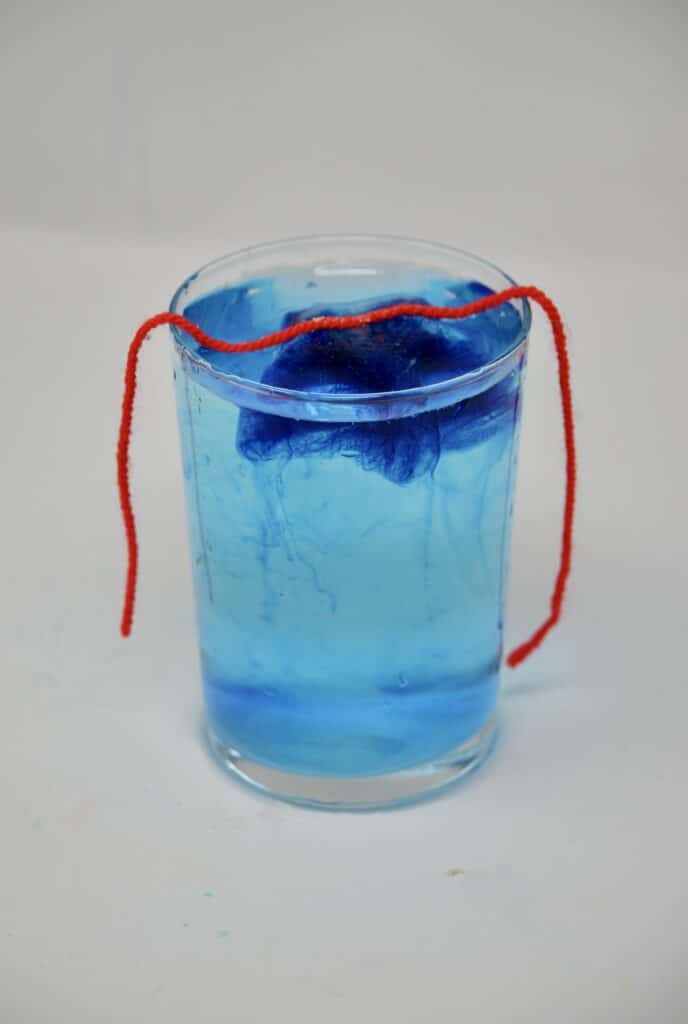
Cool a drink with ice and salt
Find out how to cool a drink with ice and salt. This is a great activity for a sunny day and a fantastic visual science demonstration as you can watch the temperature drop in seconds.
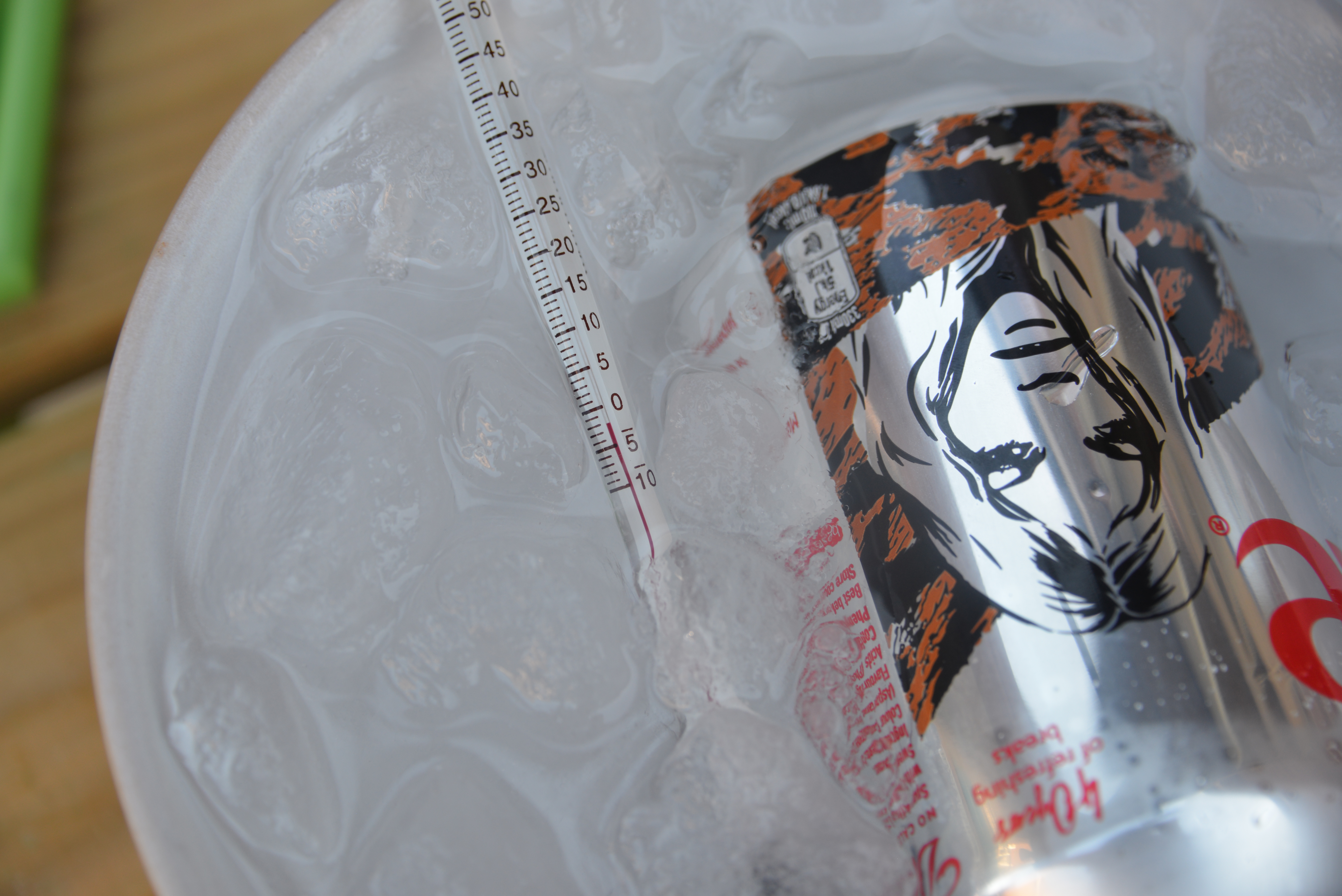
Salt Lava Lamp
A salt lava lamp is a fun twist on the more traditional lava lamp activity. It's easy to set up and looks great.
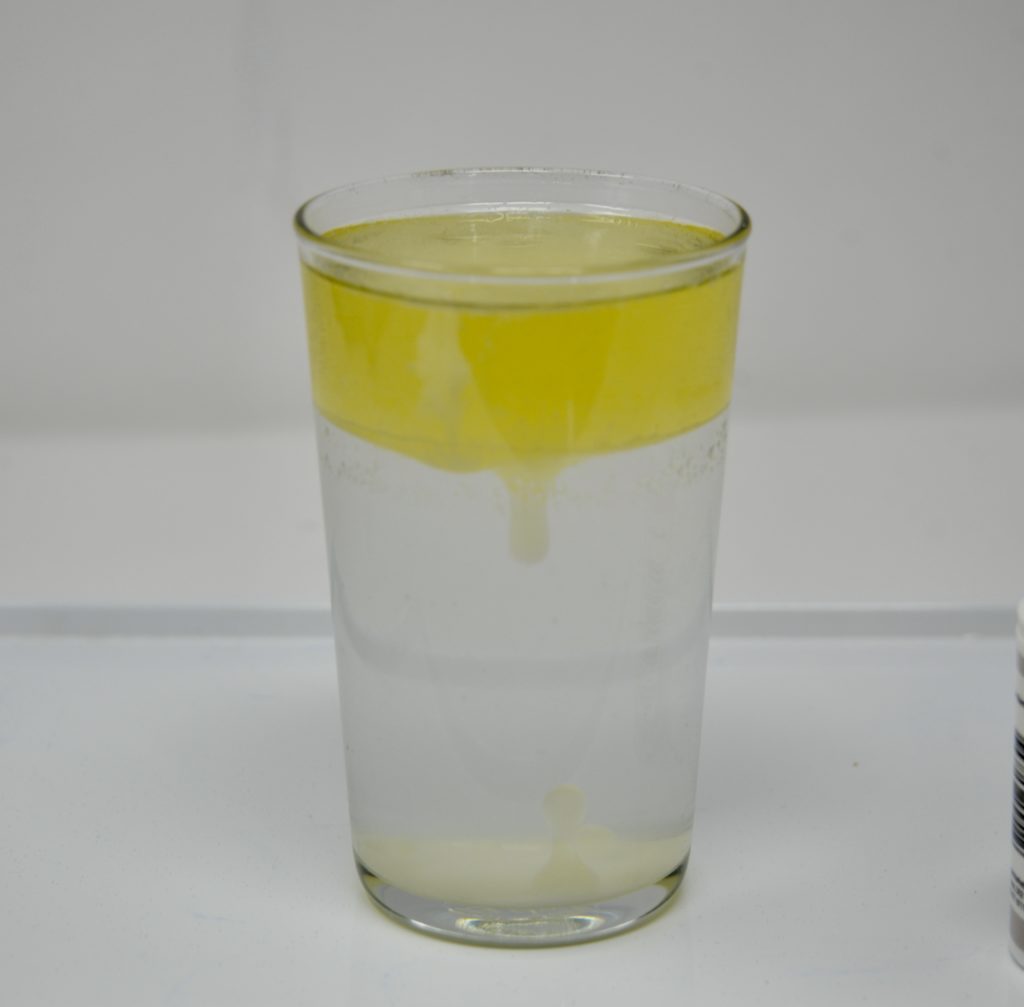
Coloured Salt Crystals
Creating coloured salt crystals is a brilliant way to learn about evaporation. You'll need a warm day, food colouring, water and salt.
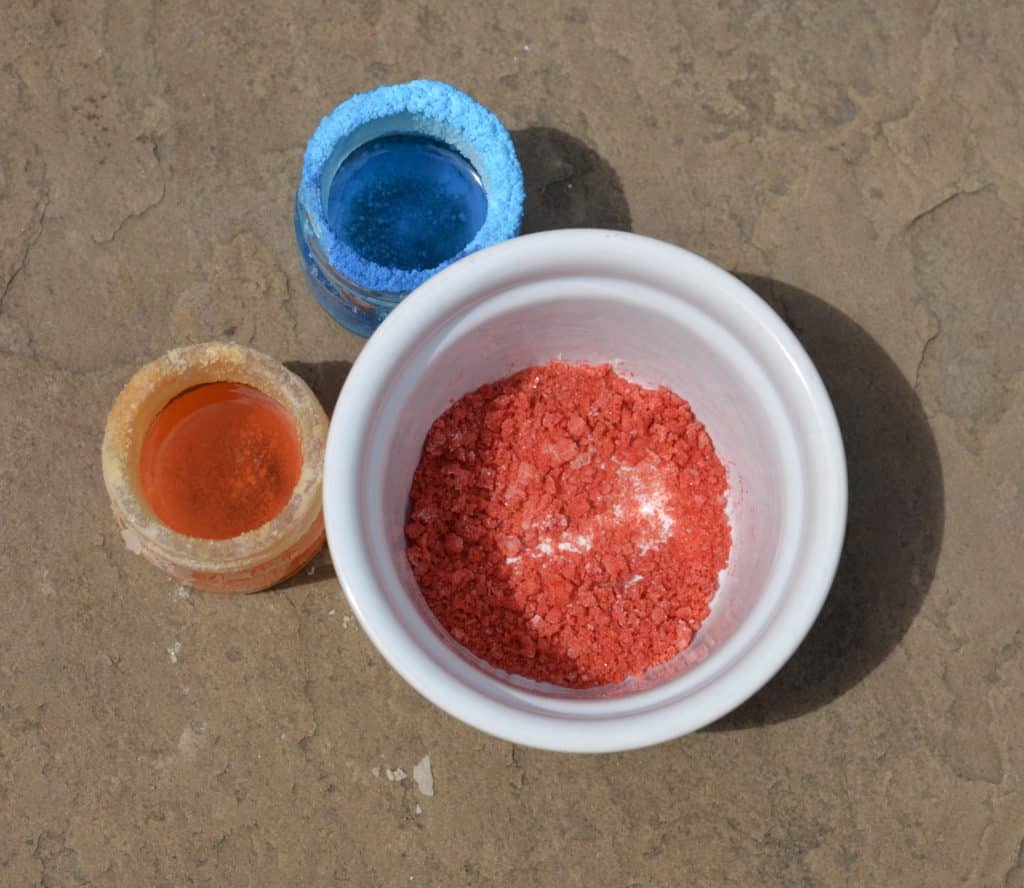
Separate salt and pepper with static electricity
Did you know you can use static electricity to separate salt and pepper? Both salt and pepper are attracted to a charged object, but pepper is lighter, and so jumps up more easily.
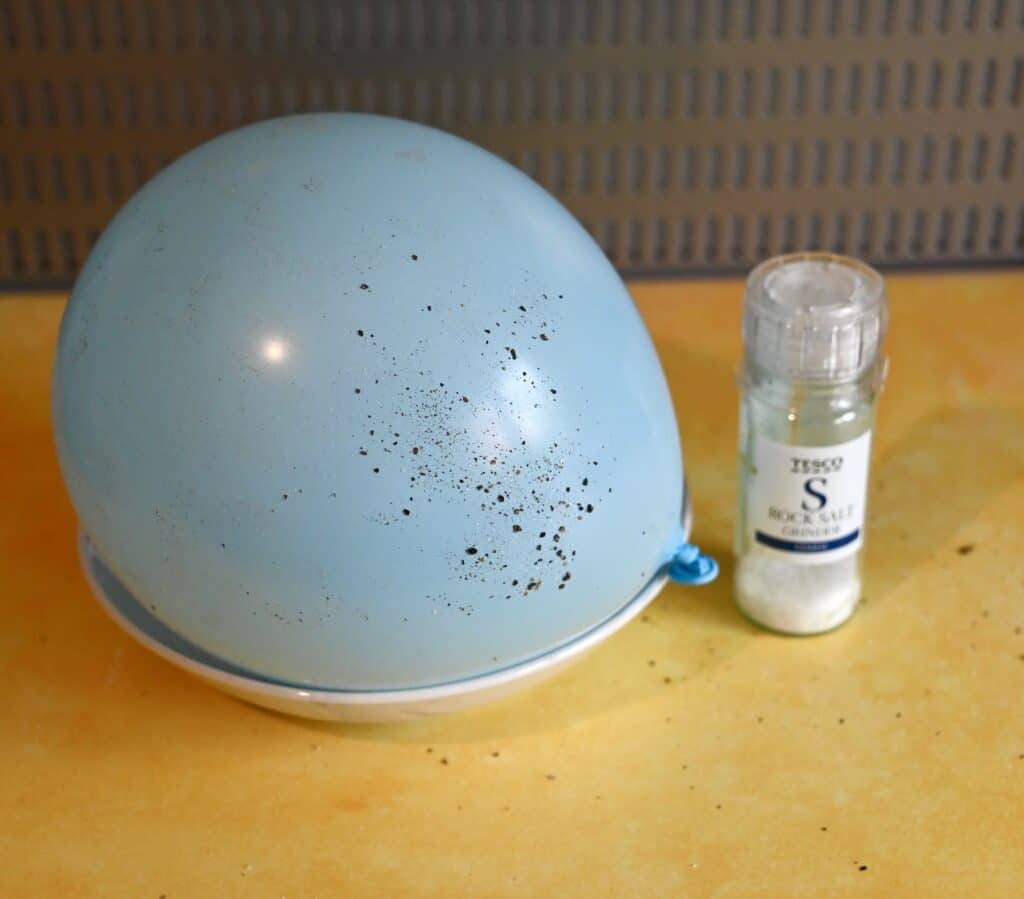
Ice cream in a bag
Salt and ice are used to make ice cream in a bag. This traditional science activity tastes amazing and uses only basic ingredients. We like to use chocolate milk to make chocolate ice cream!
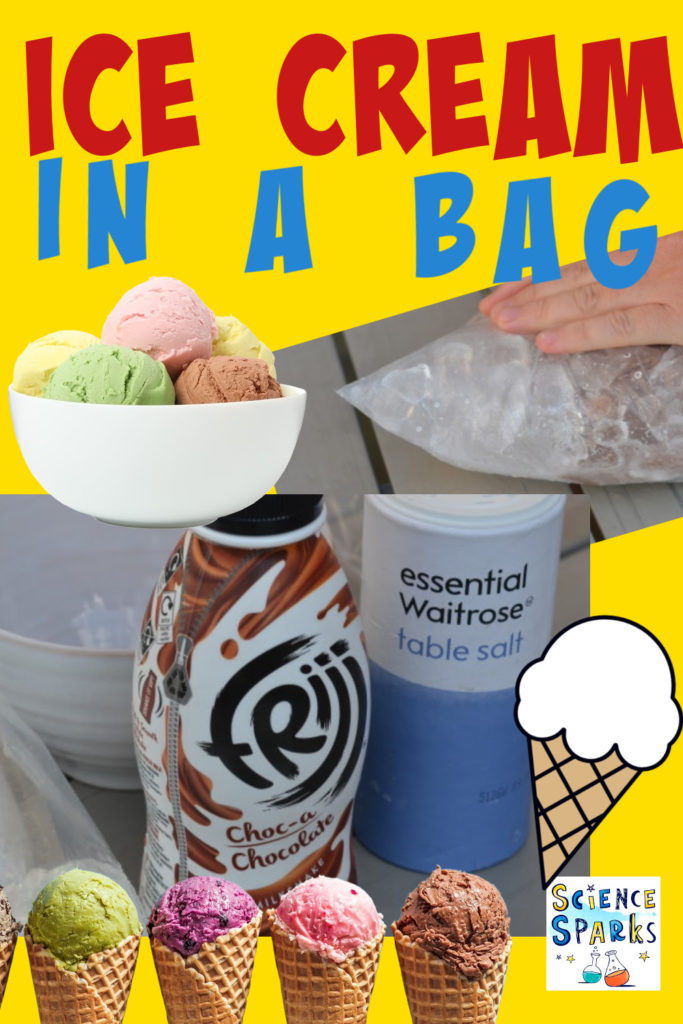
Salt and water density trick
Another simple science experiment using salt is this density trick. If you add salt to water, its density increases. This means you can create a colourful density demonstration with a layer of salt and water and a layer of food colouring and water.
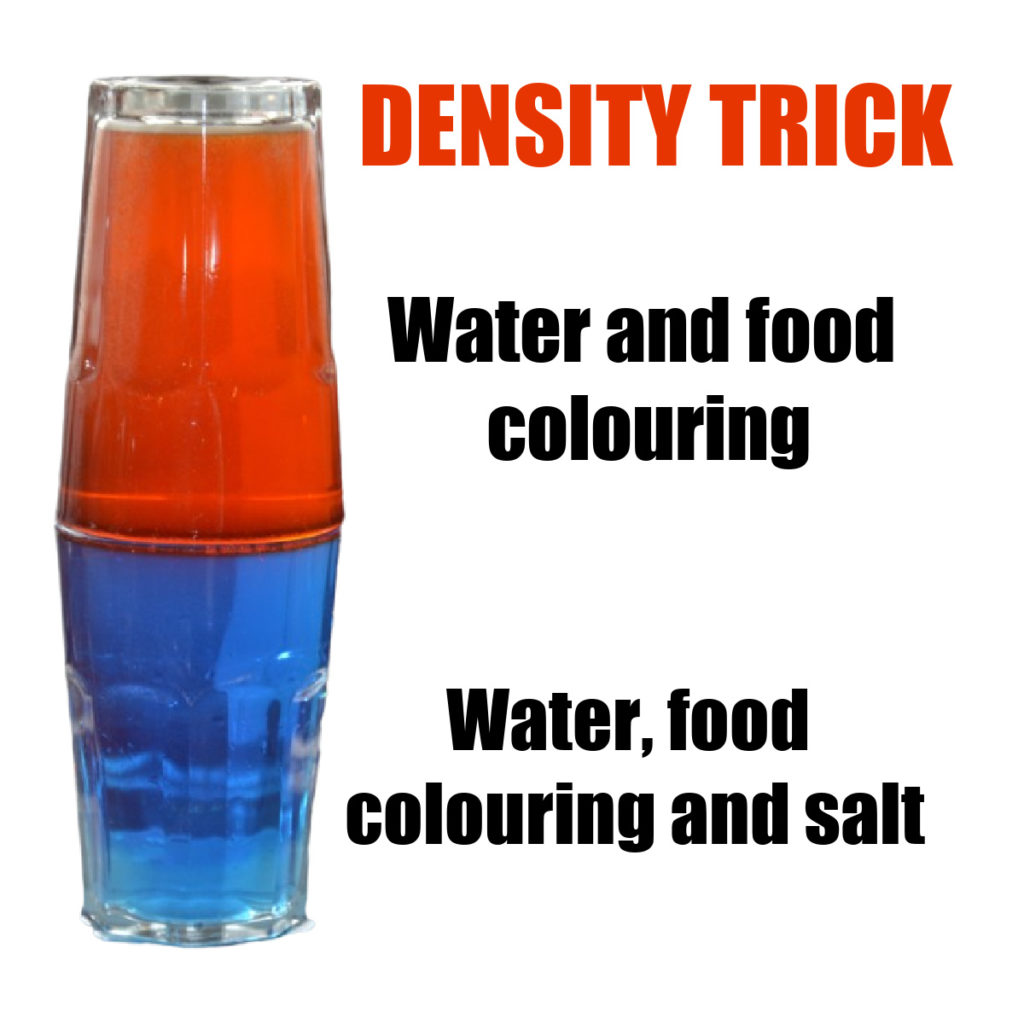
Melting ice cubes
Find out whether an ice cube melts faster in salty water or fresh water with another simple science activity.
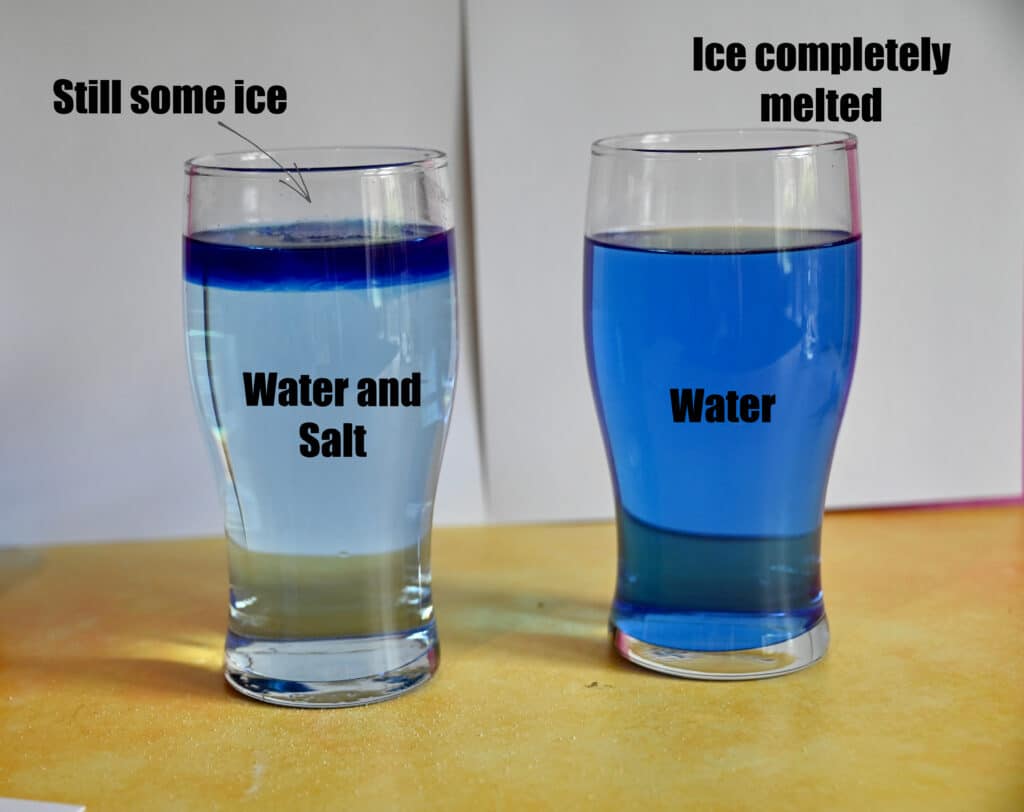
Instant slushy drink
This works in the same way as the ice cream in a bag activity. We use fruit juice instead of milk to make an instant slushy drink! Yum!
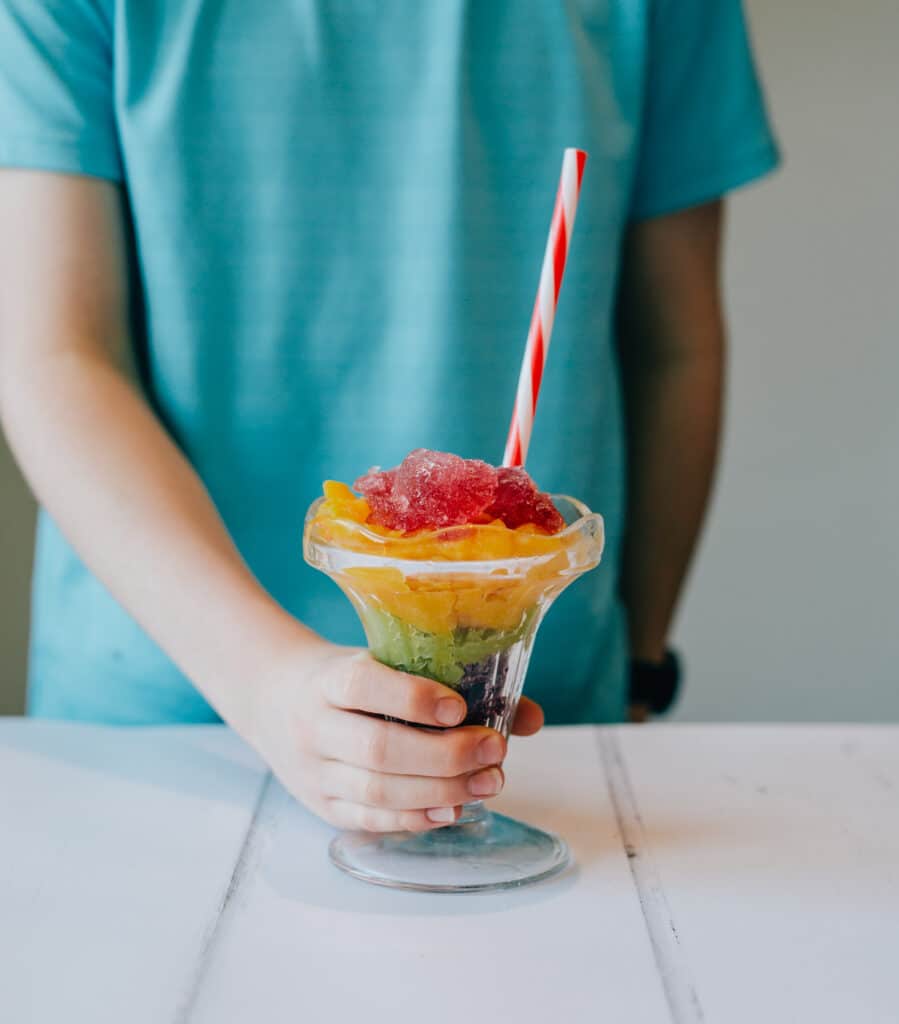
Make an egg float
Use salt to increase the density of water and make an egg float!
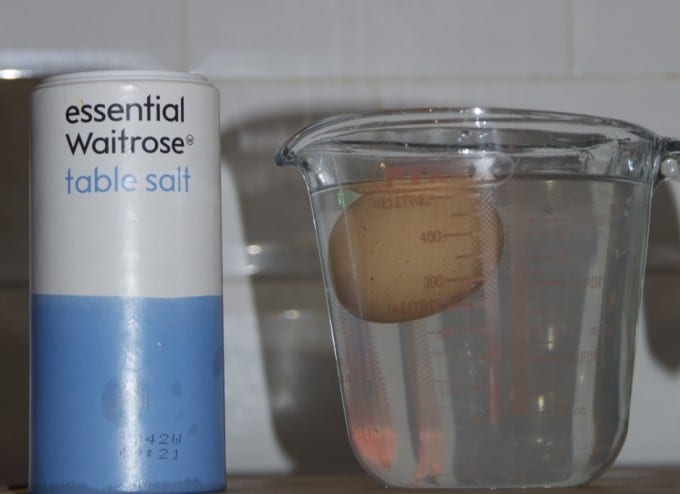
Frost on a Can
Use the cooling power of ice and salt to make frost appear on the outside of a tin can.
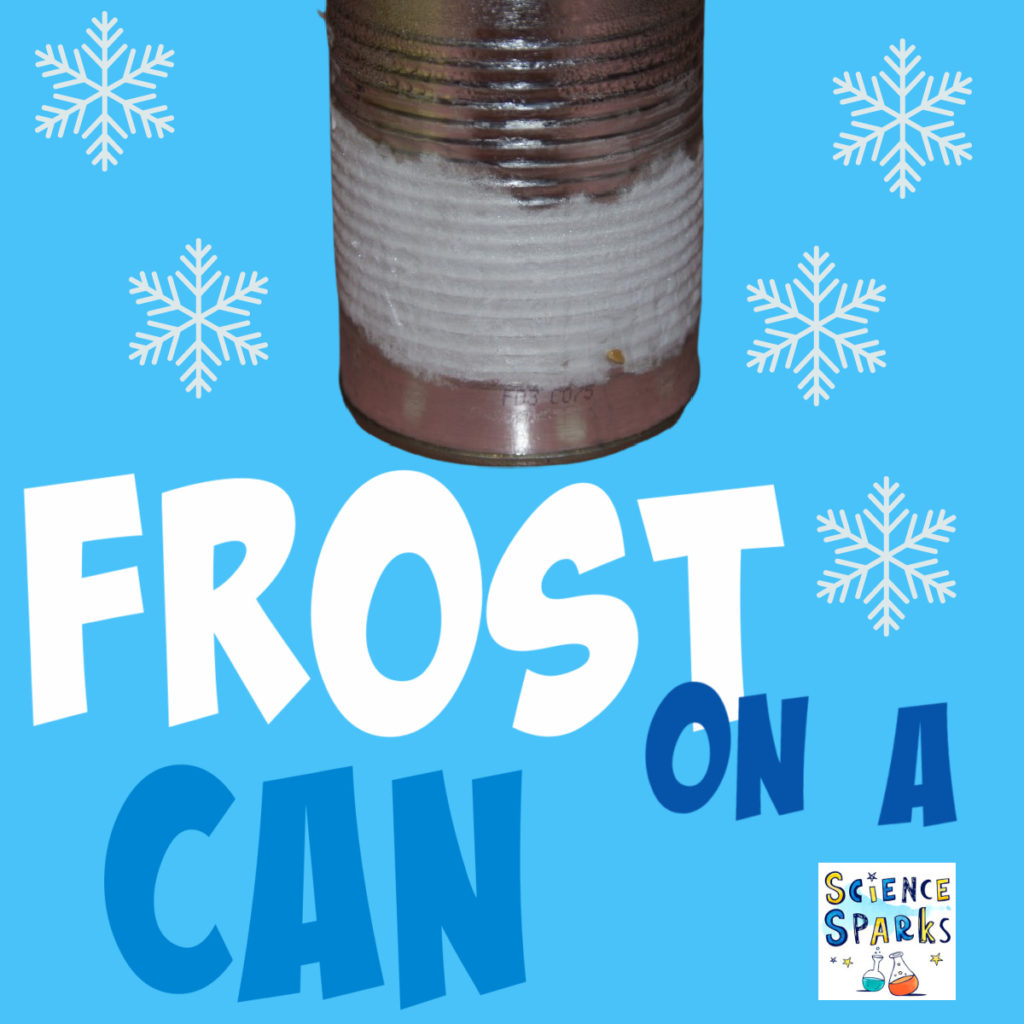
More salty science experiments
Little Bins for Little Hands has a lovely salt painting activity.
Living Well Mom has some beautiful salt snowflakes.
Make your own conducting play dough using salt!
Can you think of any more science experiments using salt for us?
Reference
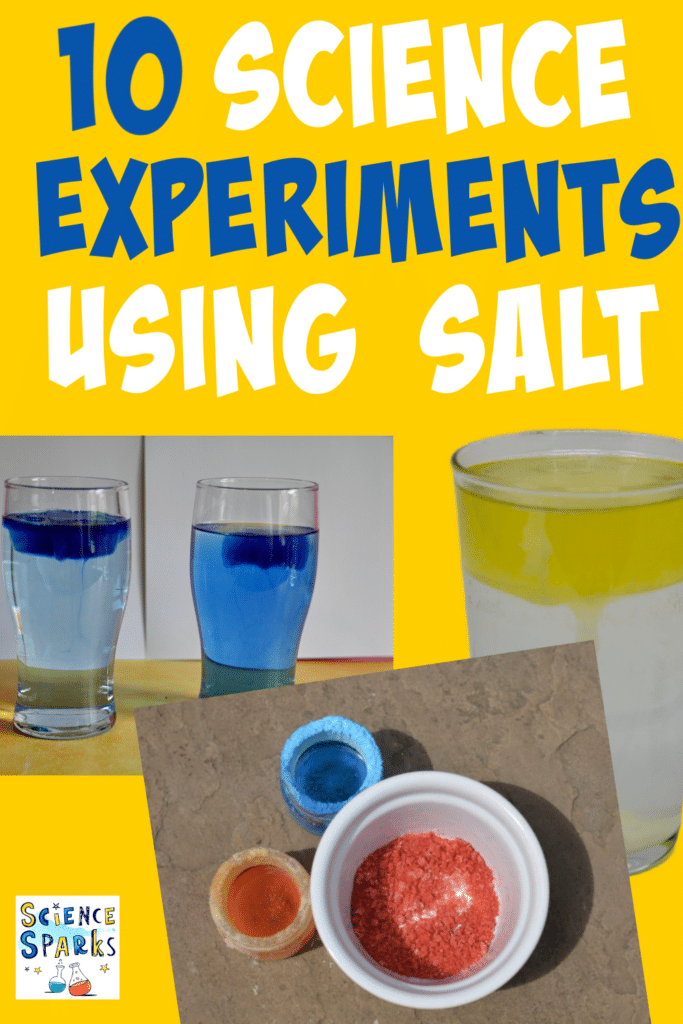
Last Updated on June 13, 2024 by Emma Vanstone
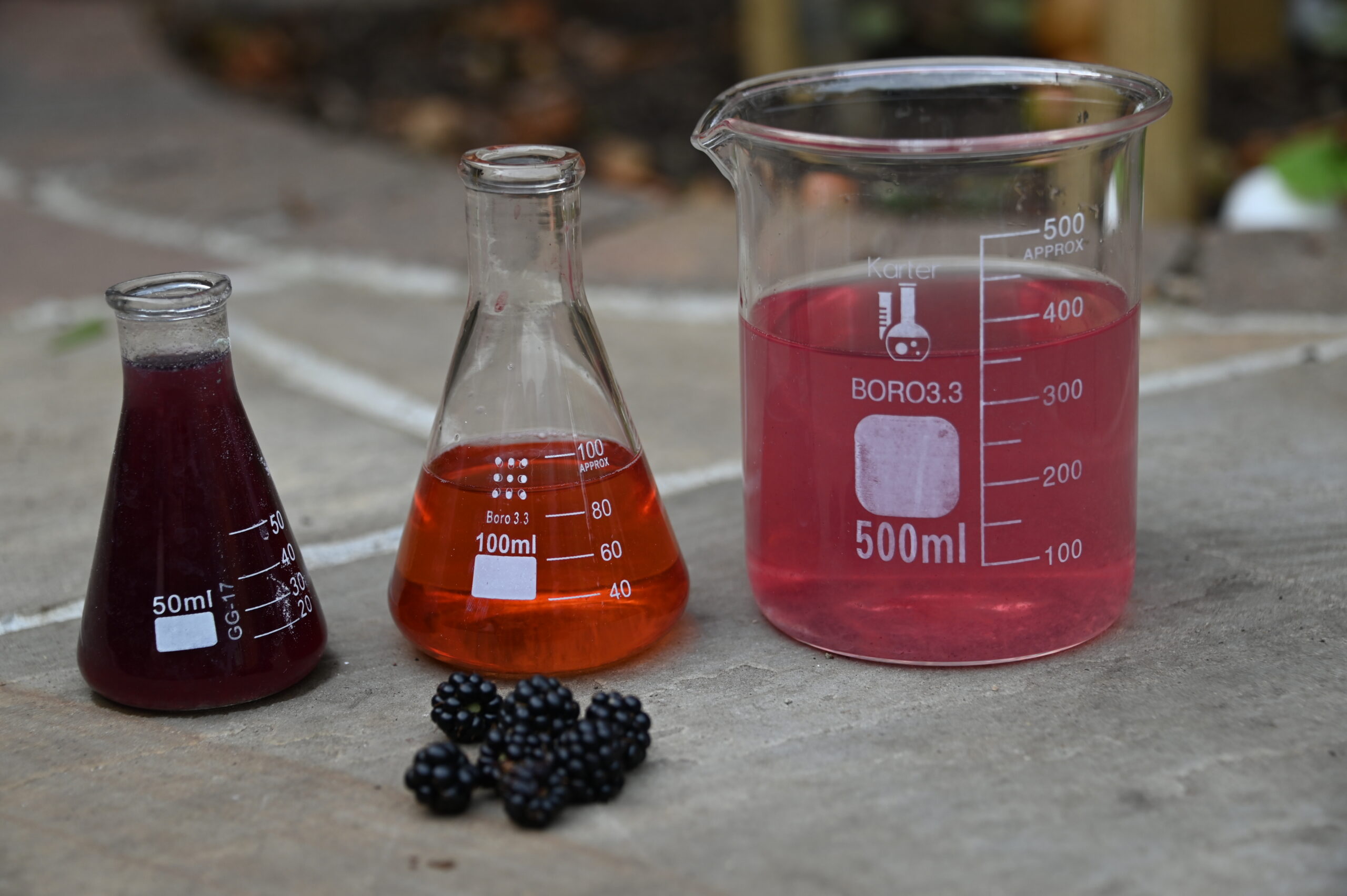
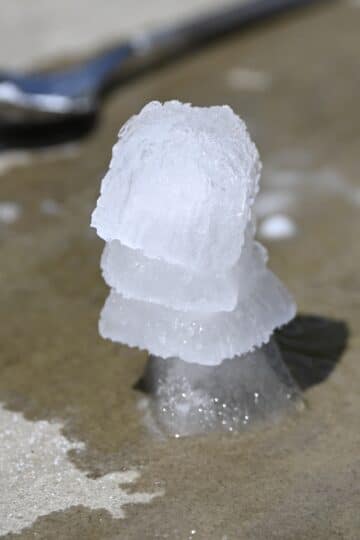
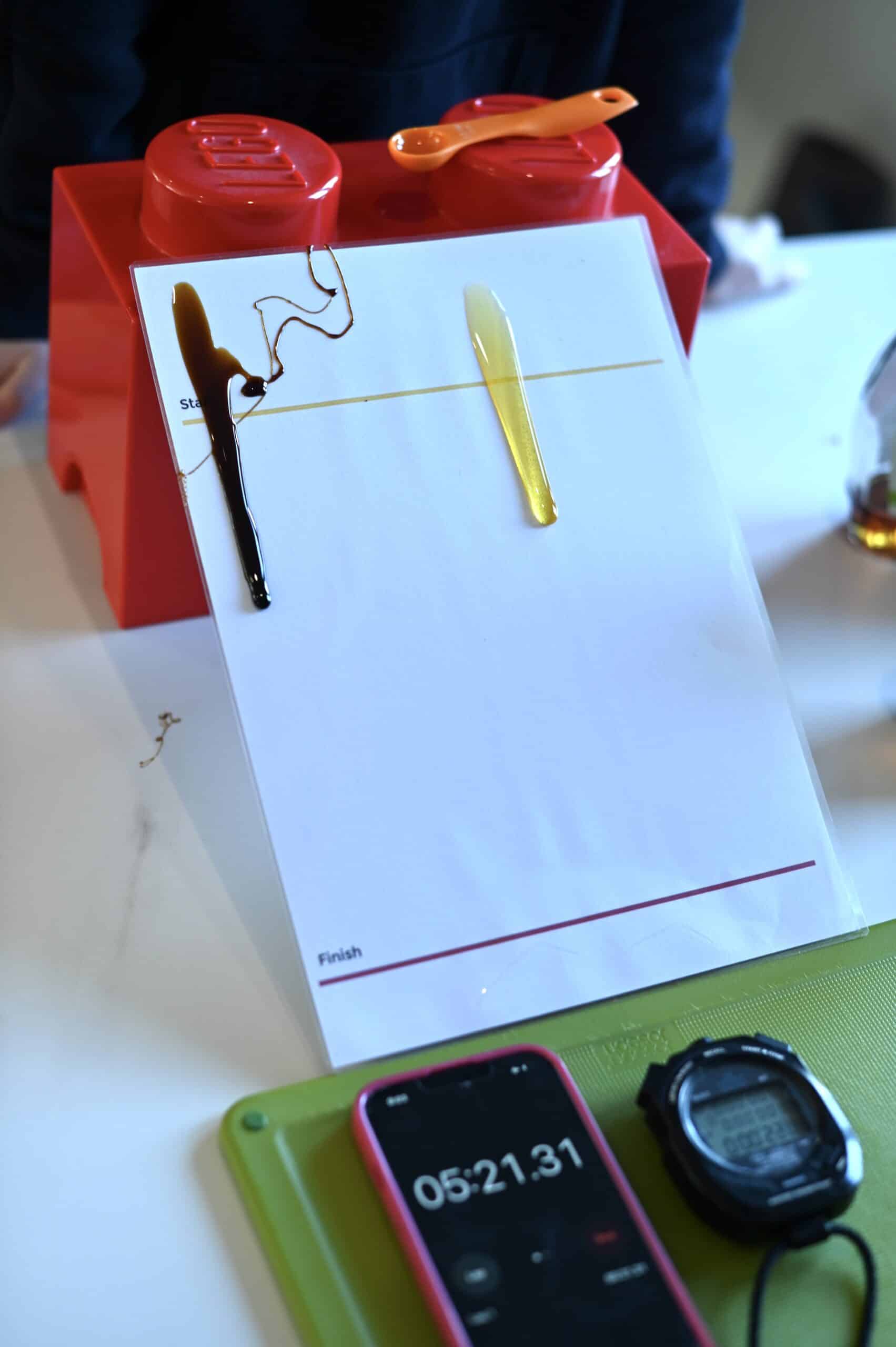
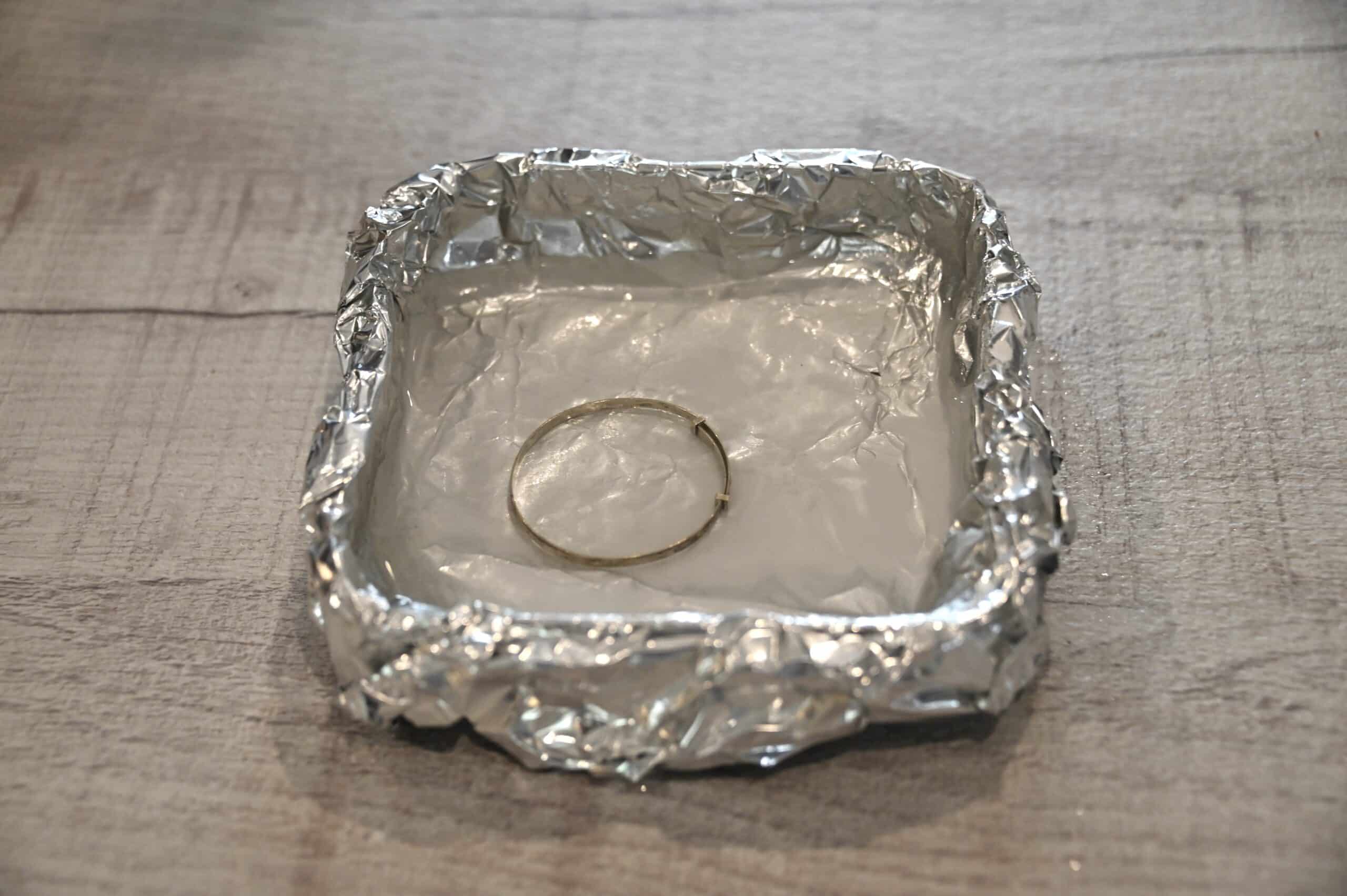
Leave a Reply